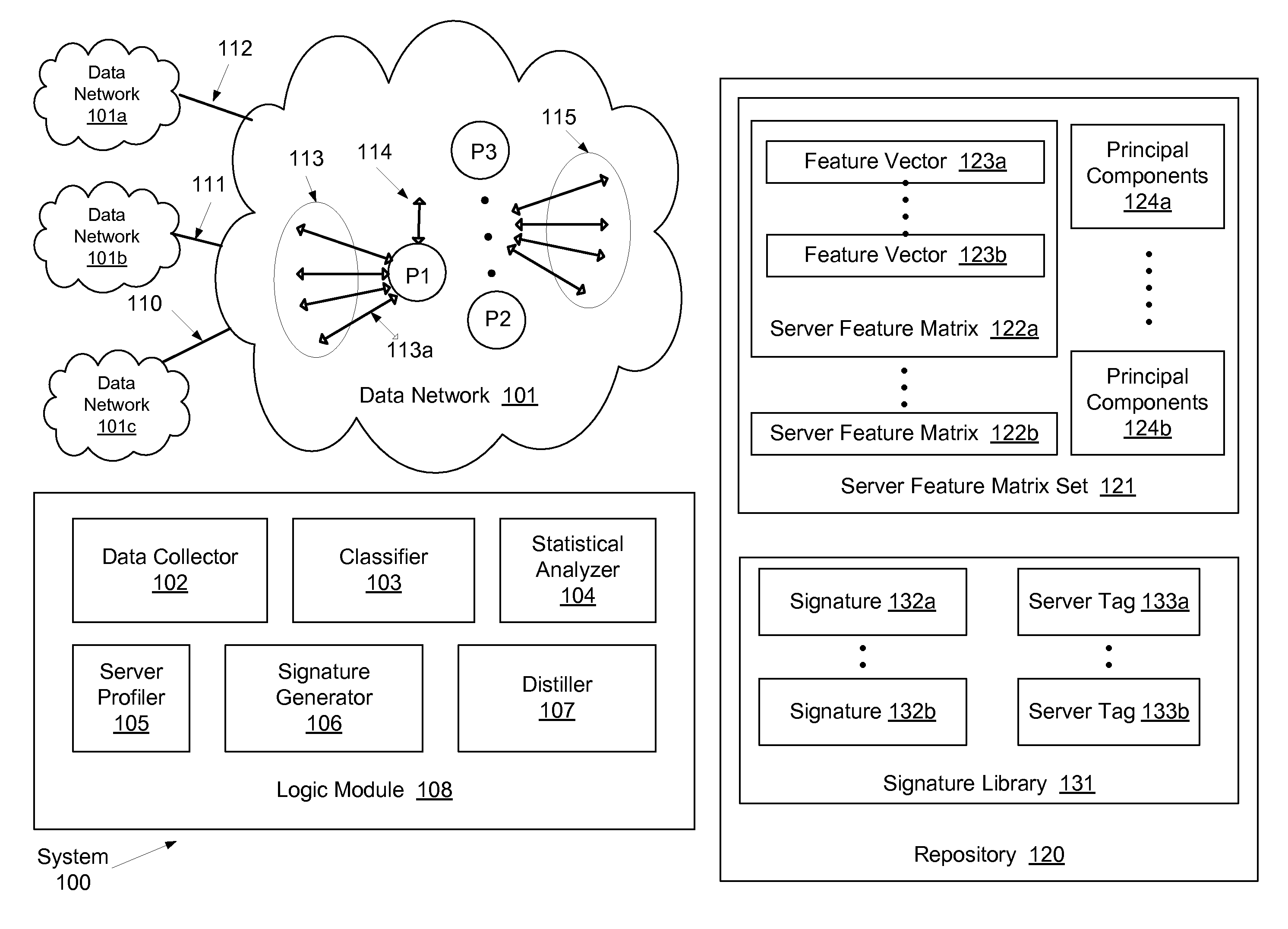System and method for identifying network applications
a network application and network application technology, applied in the field of computer networks, can solve the problems of security becoming a challenge, the accuracy of this approach is seriously reduced, and the application of the exponential rate at which new applications are added, and achieves the effect of low evaluation overhead and high accuracy
- Summary
- Abstract
- Description
- Claims
- Application Information
AI Technical Summary
Benefits of technology
Problems solved by technology
Method used
Image
Examples
Embodiment Construction
[0024]Specific embodiments of the invention will now be described in detail with reference to the accompanying figures. Like elements in the various figures are denoted by like reference numerals for consistency.
[0025]In the following detailed description of embodiments of the invention, numerous specific details are set forth in order to provide a more thorough understanding of the invention. In other instances, well-known features have not been described in detail to avoid obscuring the invention.
[0026]Generally speaking, a traffic stream (or flow) between two network hosts is a series of data records regarding the communication between the two network hosts engaged in a Internet transaction. Each traffic stream is uniquely defined by a 5-tuple identifier (i.e., source address, destination address, source port, destination port, and transport protocol). Throughout this document, the terms “traffic flow”, “flow”, “traffic stream” and “stream” are used interchangeably.
[0027]When a d...
PUM
 Login to View More
Login to View More Abstract
Description
Claims
Application Information
 Login to View More
Login to View More - R&D
- Intellectual Property
- Life Sciences
- Materials
- Tech Scout
- Unparalleled Data Quality
- Higher Quality Content
- 60% Fewer Hallucinations
Browse by: Latest US Patents, China's latest patents, Technical Efficacy Thesaurus, Application Domain, Technology Topic, Popular Technical Reports.
© 2025 PatSnap. All rights reserved.Legal|Privacy policy|Modern Slavery Act Transparency Statement|Sitemap|About US| Contact US: help@patsnap.com



